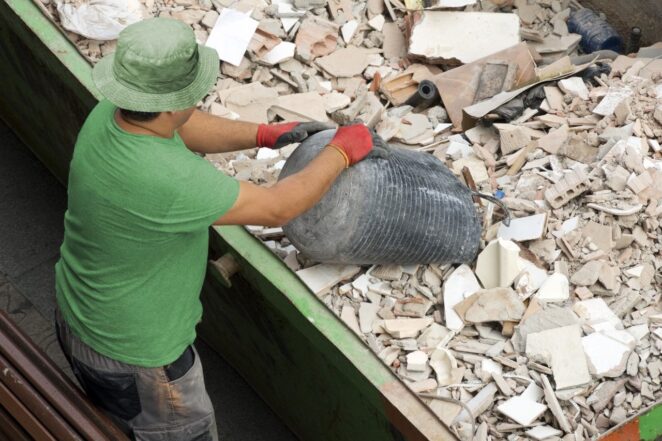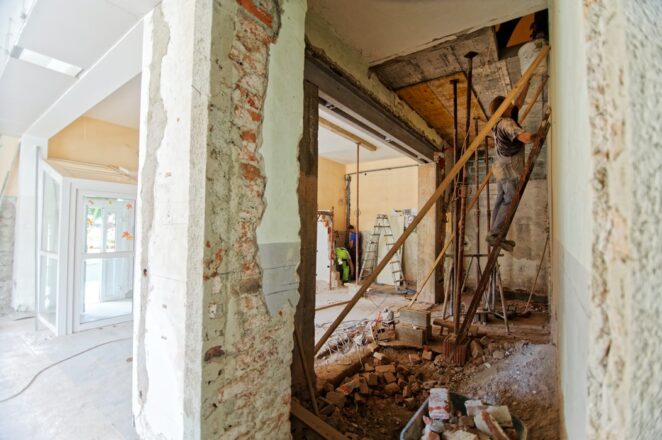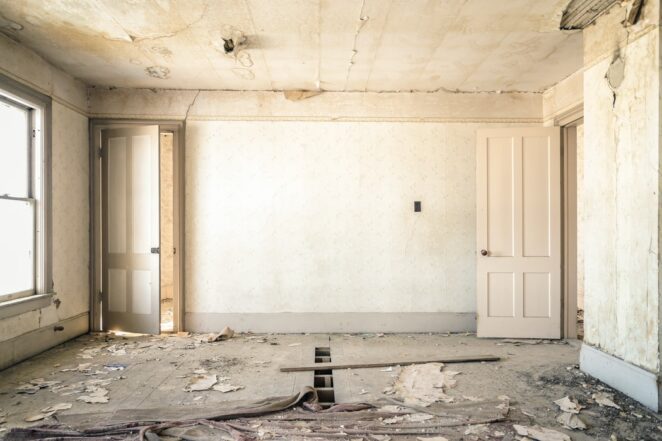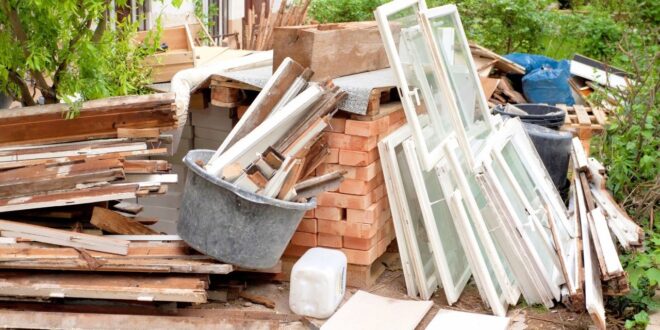No matter how careful you are, any type of home renovation inevitably results in waste disposal challenges. Whether revamping your entire home or remodeling your kitchen, you’ll likely end up with broken bricks, worn-out fixtures, dented doors, and empty paint cans.
Construction wastes come in various forms, and some materials are much more problematic to get rid of. Some people opt to hire the services of a rubbish removal company such as Dirt Cheap Rubbish Removal to dispose of the heavy and massive materials.
Before throwing out or giving away everything, consider the following points in the proper handling of your renovation wastes and rubbish.
Consult An Architect Or Contractor
If you’re hiring an architect for your home remodeling, it’s best to have them and your home contractor work together to find the best ways to renovate your home on a budget and minimize waste in the process.
Not hiring one? Discuss with your building contractor some ways to reduce construction wastes. One example is to align your home measurements to the standard sizes of construction items so that everything fits. For instance, if your wall height doesn’t match the standard board sheet size, you’re going to end up with cut-off extra sheets, contributing to the overall remodeling wastes.

Identify What Can Be Reused, Disposed Of, And Recycled
One of the surefire ways to reduce construction and renovation wastes is to determine the kinds that can be recycled and reused. Proper waste segregation is critical not only to the environment but also to your health and safety.
There are rules that govern proper waste disposal and management. Generally speaking, household items and some parts of your home can be repurposed. Depending on their condition, windows, doors, doorknobs can be kept and reused.
Below are some of the most common renovation byproducts and how to properly manage them:
- Concrete- Some cleaning companies may require you to separate concrete from other construction wastes to control the weight of the garbage containers, making it easier to load them into the trucks.
- Shingles- In most areas, roofing shingles are recycled. If they’re in an unusable state, they should be disposed of separately as you would concrete.
- Lumber- Exercise caution when removing wood from your walls, ceiling or floors, so you can reuse them. Reclaimed wood is becoming a trend, and you may end up making money out of wood by selling them.
- Carpets- A completely usable carpet may be donated to a charity or someone who may need it. If it’s in a dilapidated state, look for ways to recycle it, or throw it away for garbage removal companies to take care of. Some haulers may require you to cut the carpet to specific sizes to make it easier to dispose of.
- Wood Or Laminate Flooring- You can entirely have them recycled, as they’re not considered hazardous wastes.
- Sidings- Whether made from wood or vinyl, sidings are great salvage, too. If you don’t want them, other people will, so selling them is a great option.
- Kitchen fixtures- Sinks, toilets, cabinets, and tables are completely reusable. They can be sold for other people’s future home projects.
- Metals- This highly in-demand waste can be re-sold. For instance, more than half of the new stainless-steel products are made from recycled steel. In the same vein, other types of metal such as aluminum, copper, are highly sought-after by junkyards and recycling companies. Re-selling metal is a good way to earn money while keeping your removal costs down.

Know The Laws On Waste Disposal
Disposing of hazardous wastes and potentially dangerous household items are regulated by the Resource Conservation and Recovery Act (RCRA) in every state and locality.
To ensure that you’re not violating any laws, you may check local, national, or federal regulations. You’ll already know the applications of these laws through the presence of disposal and recycling sites in your locality.
Hazardous Wastes Are Better Handled By Professionals
Dangerous construction wastes such as empty bottles or varnish, and cans of paint, adhesives, and sealants, should be properly thrown out with the help of professionals. When handled improperly, they can release toxic gases and chemicals. Such is the case of plasterboard, which releases hydrogen sulphide – a colorless gas that’s flammable, corrosive, and poisonous.
In some cities, individuals and companies with construction and demolition debris are required to send the garbage to dedicated construction and demolition landfill facilities, where the materials are separated and recycled. You also have the option to seek the services of a junk removal company.
Consider Deconstruction Instead Of Demolition
An increasing number of environmentally and financially savvy homeowners are choosing deconstruction over demolition. The former is defined as the careful dismantling of structures to allow for greater chances of recovering recyclables from your remodeling project. It’s like doing the house construction in a completely reverse manner.
Deconstructing has the following benefits attached to it:

- Makes sorting easier
- Promotes recycling of more items
- Materials recovered may be sold
- Salvaged items may be donated
- Reduces waste materials and fees for junk removal
The only downside to deconstructing is that it’s a time-consuming activity. If you’re paying someone to sort the materials, you’d have to pay more.
Check Material Packaging
Most construction materials like paint, adhesives, lacquer thinners and varnish typically come in non-biodegradable packages. To further reduce your construction waste, consider buying some materials from manufacturers that offer eco-friendly packaging. Such packaging includes oxo-biodegradable plastics, recycled cardboard, and paper, or organic fabrics, to name a few.
Otherwise, reuse the containers if they’re not filled with potentially toxic substances.
Try Architectural Salvage Shops
This may be unheard of for most people but these places do exist. There are places called architectural salvage shops that work like antique shops for building materials. Anything that can be useful to a house or building is being sent, donated, or resold in these places.
Don’t expect to earn from these shops, as in most cases, you’d have to give your items away for free or at very low prices if you want them sold quickly. This is especially true of items that are almost completely damaged. If you have high-value vintage items, though, you may be able to earn more cash.
Some select shops even offer deconstruction services, which may come in handy if you need help in this department. Additionally, if you want to reduce your waste disposal fees, look for someone who can haul all the usable construction debris off your hands for free.

Donate Your Things
Household items and kitchen fixtures can be donated to nonprofits organizations, charities, or church groups. You can also hand them over to friends and persons who may need them, without the extra cost.
Aside from the sense of fulfillment, this generous act can also help you in the form of tax deductions.
Otherwise, you can offer your renovation wastes up for barter. This is another cost-effective way to get the items for your current or next project without shelling out cash.
Consider Restoration Instead Of Replacement
Sure, you want to change your overall design. However, you don’t necessarily have to get rid of everything and have them replaced with new ones. If you’re renovating on a budget or planning to reduce your renovation debris, consider giving new life to an old piece by restoring it.
This is especially true for vintage, one-of-a-kind, and historically valuable artifacts, décor, or fixtures. By repainting, repurposing, remodeling, and recreating your valuables, or by simply restoring them to their originally glorious form, you’ll be able to spend less and reduce your wastes, too.
The Bottom Line
There are many ways in which you can reduce your construction or renovation debris, depending on the state of your salvaged materials. In reusing, repurposing, donating, reselling, you can help save the environment and reduce your disposal costs by simply considering the steps discussed in this article.
More than anything else, following the state rules in waste disposal is essential because mistakes can lead to potential health and environmental problems in the long run.
 Vermont Republic Second Vermont Republic
Vermont Republic Second Vermont Republic




